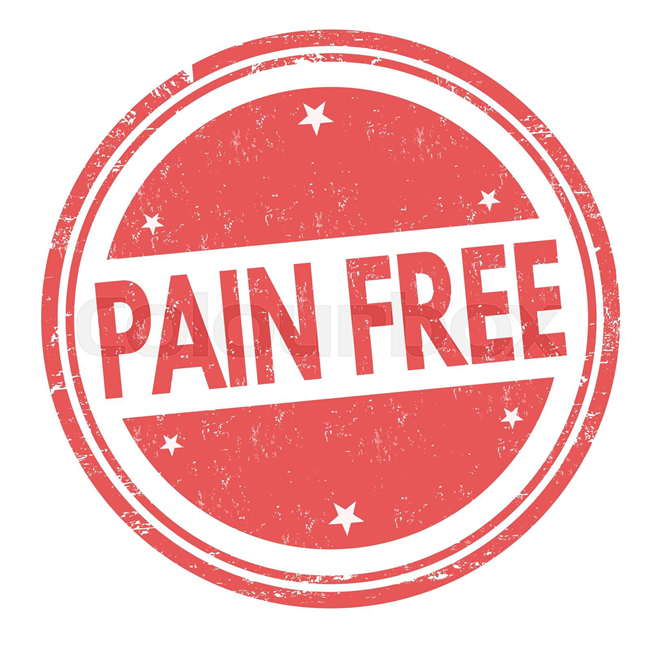Pain-free Dentistry
Pain-free Dentistry
There was a time when the thought or sight of a dental treatment or dental surgeon brought bad memories or bad experiences. Dentistry has come a long way from painful injections and tooth removals and bad mouth swellings.
Today, dentistry and pain belong to two different worlds. Thanks to introduction of facilities and technologies like, oral sedatives, conscious sedation anesthesia and usage of LASERS in hard tissue and soft tissue procedures, dentistry has become absolutely painfree.
CONSCIUOS SEDATION
Conscious sedation is indeed a valuable tool in painless dentistry, especially for treating anxious adults and pediatric patients. It helps create a more relaxed and comfortable experience during dental procedures.
For Anxious Adults:
1. Reducing Anxiety: Many adults experience dental anxiety, which can range from mild nervousness to severe phobia. Conscious sedation techniques like nitrous oxide (laughing gas) or oral sedatives can help calm nerves and reduce anxiety levels.
2. Enhancing Comfort: Sedation allows patients to remain conscious and responsive but in a relaxed state, making it easier for them to tolerate longer procedures without experiencing discomfort or stress.
3. Promoting Cooperation: Anxious patients might find it challenging to sit through dental procedures, which can compromise the quality of treatment. Conscious sedation helps patients stay cooperative, allowing dentists to perform necessary procedures effectively.

For Pediatric Patients:
Alleviating Fear
Children often have apprehensions about visiting the dentist. Conscious sedation techniques tailored for pediatric patients help reduce fear and anxiety, making dental visits less intimidating.
Improving Compliance
Sedation can assist in keeping children still during procedures, ensuring better compliance and cooperation, which are crucial for the dentist to work effectively and safely.
Enhancing Experience
By creating a more positive and comfortable dental experience, sedation can help children associate dental visits with less fear, potentially reducing future anxieties about oral health care.
Using conscious sedation in both adult and pediatric dentistry has the dual benefit of ensuring patients receive necessary dental care while mitigating the emotional and physical discomfort often associated with dental procedures. It helps create a more positive dental experience, encouraging regular visits and better oral health practices in the long run.
LASERS IN DENTISTRY
Lasers in dentistry have become integral for various procedures, both for soft tissue and hard tissue treatments. Here are their applications and advantages:
Soft Tissue Procedures:
- Gum Reshaping: Lasers are used to reshape gum tissue for aesthetic reasons or to expose more of the tooth’s surface for restorative procedures.
- Gum Disease Treatment: Laser-assisted periodontal therapy can remove infected gum tissue and bacteria while promoting gum reattachment to the tooth.
- Frenectomy: The removal or modification of the frenulum (a fold of tissue) is often done with lasers to treat conditions like tongue-tie or lip-tie.
- Biopsy: Lasers assist in the removal of tissue for biopsy, aiding in the diagnosis of oral lesions.
Hard Tissue Procedures:
- Cavity Detection: Lasers can detect cavities early by measuring the density of teeth and identifying areas of decay.
- Cavity Preparation: They are used to precisely remove decayed tooth structure while preserving more healthy tooth structure compared to traditional drills.
- Dental Fillings: Lasers can assist in hardening or curing dental fillings.
- Root Canal Treatment: Lasers help in cleaning and shaping the root canal system during endodontic procedures.
Advantages of Lasers in Dentistry:
Precision
Lasers precisely target affected areas while preserving healthy tissue, leading to minimal damage.
Minimally Invasive
They often eliminate the need for drills or anesthesia, reducing patient discomfort.
Reduced Bleeding
Lasers assist in clotting blood vessels, minimizing bleeding during procedures.
Faster Healing
Their precision and reduced trauma promote faster healing and tissue regeneration.
Sterilization
Lasers have the ability to sterilize the treated area, reducing the risk of bacterial infection.

Indications of Lasers in Dentistry:
01
Soft Tissue Surgery
Including gum reshaping, removal of lesions, or treatment of oral ulcers.
02
Hard Tissue Procedures
Such as cavity preparation, root canal disinfection, and treatment of tooth sensitivity.
03
Periodontal Treatment
For managing gum disease and promoting gum health.
04
Cosmetic Dentistry
For procedures like gum contouring to improve the appearance of the smile.

Lasers continue to evolve in dentistry, offering precise and minimally invasive solutions for a wide range of oral health issues. Their use can lead to improved patient comfort, faster recovery times, and enhanced treatment outcomes.
Need an Emergency Help?
Call Us!
Testimonials
What people say about Us.

Mr. and Mrs.Bagla
They are dentists with good skill and talent…soft spoken and well behaved..

Vipin Netriwal
I was dealing with a dental surgical complication from my previous dentist since last 3-4 months for which I consulted so many doctors. A friend of mine suggested me to consult Dr. Gaurav Shah and after getting the treated by Dr. Gaurav Shah, my problem vanished in 15 days. It is also pertinent to mention here that both the husband and wife (Dr. Gaurav Shah and Dr. Veena Gauri Shah) are very kind hearted, very soft spoken and behave with patient in such a manner that the patient feels relieved of pain. Thanks a lot.

Arun Chordia
My experiences with Dr. Shah have always been extremely pleasant. His professional approach along with top quality service delivery ensures all round dental care.

